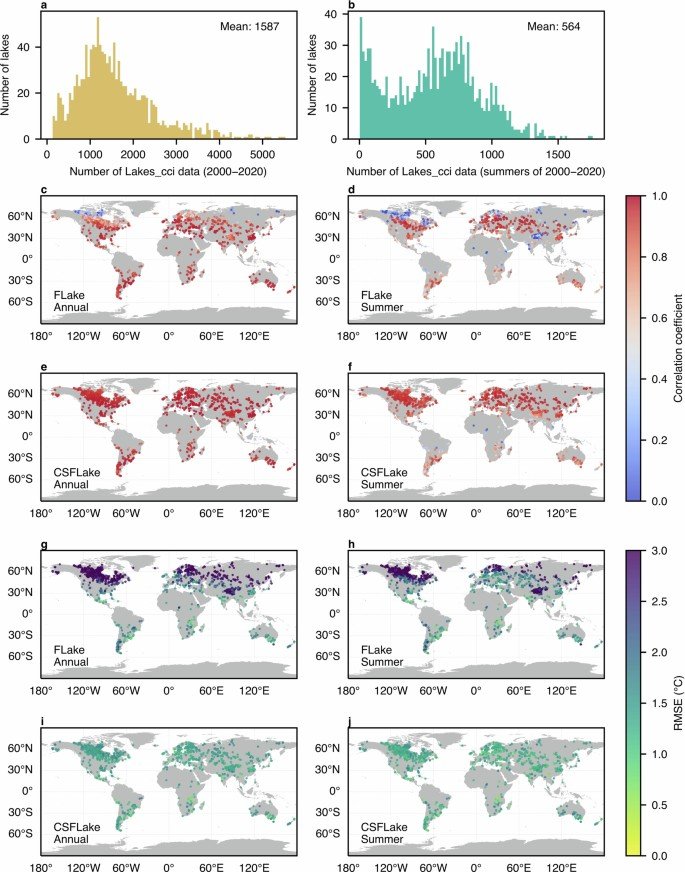19 de septiembre de 2024
Disproportionate Impact of Atmospheric Heat on Lake Temperatures: new study
Study makes use of ESA lake satellite-based climate data record
A recent study published in Nature Climate Change reveals that atmospheric hot temperature extremes are significantly affecting lake surface water temperatures worldwide.
Researchers, led by Xiwen Wang and colleagues including member of the ESA CCI Lakes project, Iestyn Woolway of Bangor University, analysed data from 1,260 lakes between 1979 and 2022, using numerical models and satellite observations to examine the link between atmospheric hot temperature extremes and lake heatwaves.
The study found that despite atmospheric hot temperature extremes accounting for just 7% of total summer days, they contribute to 24% of summer warming trends in lakes. The impact is most severe in Europe, where atmospheric hot temperature extremes are responsible for 27% of lake surface temperature increases. Additionally, atmospheric hot temperature extremes drive both the duration and intensity of lake heatwaves, with cumulative heat effects rising at 0.92°C days per decade.
This study highlights the critical role short-term climate extremes play in shaping long-term water temperature dynamics, especially as global warming intensifies.

Satellite climate record - Lakes
The ESA Climate Change Initiative’s Lakes project develops global, satellite-derived products that address the Lakes Essential Climate Variable, as defined by Global Climate Observing System [GCOS-200] covering the period 1992-2022. The variables generated via this project includes:
- Lake Water Level: fundamental to understand the balance between water inputs and water loss.
- Lake Water Extent: a proxy for change in glacial regions (lake expansion) and drought in many arid environments, water extent relates to local climate for the cooling effect that water bodies provide.
- Lake Surface Water temperature: correlated with regional air temperatures and a proxy for mixing regimes, driving biogeochemical cycling and seasonality.
- Lake Ice Cover: freeze-up in autumn and advancing break-up in spring are proxies for gradually changing climate patterns and seasonality.
- Lake Ice Thickness: a driver of seasonal lake biogeochemistry and early indicator of changing lake thermodynamics. This product, is being evaluated and upscaled during the current project phase.
- Lake Water-Leaving Reflectance: a direct indicator of biogeochemical processes and habitats in the visible part of the water column (e.g. seasonal phytoplankton biomass fluctuations), and an indicator of the frequency of extreme events (peak terrestrial run-off, changing mixing conditions).
Access ESA climate data records
Long-term records for a suite of high quality data products that address Essential Climate Variables generated by ESA's Climate Change Initiative are free and open access.

